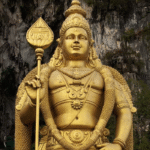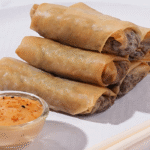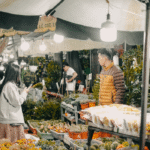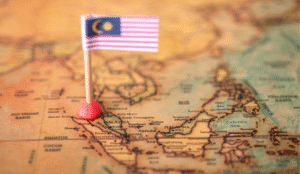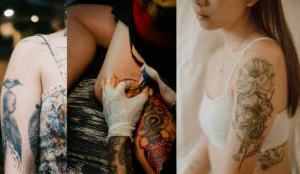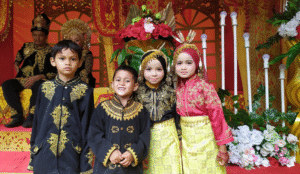Traditional Malay Weddings: Unique Rituals, Symbolism, and Celebrations
A Malay wedding is not just a union between two individuals—it’s a deeply symbolic and vibrant celebration that reflects centuries of tradition, community values, and cultural richness. While modern influences have shaped some aspects of these ceremonies, many elements of the traditional Malay wedding ceremony remain proudly preserved in today’s Malaysian society.
From pre-wedding customs to post-wedding celebrations, every stage of a Malay wedding is imbued with meaning, grace, and joy. Whether you’re attending as a guest or simply fascinated by cultural rituals, understanding the components of a Malay wedding offers insight into the values and customs of the Malay community.
Frequently Asked Questions (FAQ)
1. What is a wedding in Malay culture?
A wedding in Malay Culture is a joyful and sacred celebration that marks the union of two individuals and their families. It’s often filled with colorful attire, traditional music, symbolic rituals, and a big feast. Malay weddings blend Islamic practices with local customs, including events like the akad nikah (marriage contract), bersanding (seated ceremony), and majlis kenduri (wedding reception).
2. What is the difference between a wedding and a traditional wedding?
A wedding is a general term for any marriage celebration, while a traditional wedding follows specific cultural or religious customs passed down through generations. For example, a traditional Malay wedding includes ceremonies like merisik (courting) and bersanding, which are unique to Malay heritage, whereas a modern wedding might skip those and follow a more contemporary style.
3. What is the difference between a wedding and a wedding ceremony?
A wedding refers to the entire event or celebration, which may last several days and include multiple gatherings. The wedding ceremony, on the other hand, is the specific part where the marriage is formalized, such as the akad nikah in Malay culture. It’s the official and often religious component of the whole wedding process.
4. What is the difference between traditional and contemporary weddings?
Traditional wedding follow cultural customs, dress codes, and rituals that reflect heritage—like wearing traditional Malay attire, performing tepung tawar, and holding the bersanding.
Contemporary weddings may adopt modern trends, such as Western-style gowns, minimal rituals, and hotel receptions. Many modern Malaysian couples now blend both styles for a unique fashion celebration.
5. What are the rituals of Malay culture?
Malay culture has many beautiful rituals, especially in weddings. Key ones include:
- Merisik – the family visits to express intent to marry
- Bertunang – the engagement ceremony
- Akad Nikah – the religious marriage contract
- Bersanding – the bride and groom seated on a decorated stage like royalty
Tepung Tawar – a blessing ritual involving scented water and rice
These rituals reflect respect, community involvement, and spiritual meaning in Malay life.
The Beauty of Courtship: Merisik (Proposal Visit)
The journey of a Malay wedding often begins with merisik, a tradition where the groom’s family visits the potential bride’s family to express interest. Unlike Western proposals, this is more of an inquiry than a declaration of engagement.
During the merisik, elders from the groom’s side speak with the bride’s parents to learn about her background, personality, and family. It’s also a respectful way to ensure that the woman is not already engaged or married. This phase highlights the importance of family involvement and consensus in a traditional Malay wedding ceremony.
Although modern couples often already know each other, merisik still occurs out of respect for cultural norms. It’s seen as a gesture of sincerity and honor from the groom’s family.
The Engagement: Meminang (Formal Proposal)
If the merisik is successful, the families move on to meminang, the formal engagement proposal. The groom’s family returns with gifts, often beautifully wrapped in trays called hantaran. These typically include symbolic items like sirih junjung (a decorative betel leaf arrangement), fruit, traditional snacks, and a ring.
The bride’s family may reciprocate with their own set of trays, and both sides agree on the Malay wedding date, dowry (mas kahwin), and gift exchange values. The engagement period is viewed as a time for both families to prepare spiritually, emotionally, and logistically for the upcoming wedding.
This engagement is not just a commitment between the couple, but between families—further emphasizing the communal nature of a traditional Malay wedding ceremony.
The Sacred Union: Akad Nikah (Marriage Contract)
The akad nikah is the most important element of a Malay wedding—it is the actual marriage contract under Islamic law (nikah), making the couple legally husband and wife.
Usually held in a mosque, the bride’s home, or a local community hall, this solemn ceremony is officiated by a kadi (Islamic marriage registrar) or a religious elder. The groom recites a declaration accepting the bride as his lawful wife, and witnesses confirm the event.
What’s beautiful about the akad nikah is its simplicity and spiritual focus. While later events are festive, this moment is intimate and sacred. The bride often listens from behind a curtain or in another room, symbolizing modesty and reverence.
Post-Nikah Customs: Bersanding and Beyond
After the akad nikah, the couple is officially married, but the celebration doesn’t end there. The bersanding is the highlight of the Malay wedding, where the bride and groom are presented as royalty. It’s a regal affair filled with colors, music, and blessings.
Dressed in traditional attire—often in songket or other luxurious fabrics—the couple sits on a raised dais called the pelamin. Guests take turns to bless the newlyweds with tepung tawar, a ritual involving rice flour, scented water, and flower petals.
This act is not merely decorative. It represents the community’s wishes for fertility, happiness, and a prosperous future for the couple. The bersanding truly captures the communal spirit of a traditional Malay wedding ceremony, where everyone plays a part in the couple’s new chapter.
Symbolism in Attire and Rituals
The attire worn during a Malay wedding is not only stunning but also rich in symbolism. The bride’s baju kurung or baju kebaya, and the groom’s baju melayu with samping and tanjak (traditional headdress), reflect royal influences from the Malay Sultanate period.
Colors are chosen carefully—gold for royalty, red for passion, white for purity. Embellishments often include traditional embroidery and jewelry, showcasing artistry passed down through generations.
The presence of kompang drummers and silat performances (a traditional martial art) are more than entertainment. They symbolize strength, protection, and readiness for a new life together.
The Role of Food: A Culinary Celebration
No Malay wedding is complete without a feast—often called the kenduri kahwin. Food is central to the celebration, not just to fill stomachs but to honor guests and express gratitude.
Tables are laden with dishes like nasi minyak (ghee rice), ayam masak merah (red-cooked chicken), beef rendang, acar, and kuih-muih (traditional sweets). In rural settings, entire villages may pitch in to cook, reflecting the communal effort of a traditional Malay wedding ceremony.
Guests often enjoy an open-house concept, where everyone is welcome, regardless of invitation. This act of generosity reinforces the value of hospitality in Malay culture.
The Dowry and Hantaran: Meaning Beyond Money
Another integral part of a Malay wedding is the mas kahwin (dowry) and hantaran (gift exchange). While the mas kahwin is often a small, symbolic amount that reflects Islamic requirements, the hantaran can include items like clothing, perfumes, religious books, or even modern gadgets.
These exchanges are less about materialism and more about mutual respect. The groom’s gifts represent his commitment to care for his bride, while the bride’s reciprocation signifies acceptance and partnership.
In recent years, couples have added personalized touches—such as handmade gifts or items with shared significance—to modernize this aspect while maintaining the heart of tradition.
Family, Faith, and Community: Core to Every Celebration
Perhaps the most beautiful aspect of a Malay wedding is how deeply it integrates family, faith, and community. Unlike Western-style weddings that often center solely on the couple, Malay weddings are inclusive and spiritual.
Elders play a key role in guiding younger family members. The community contributes labor, food, and blessings. Religious customs are carefully observed, from the recitation of doa selamat (prayers for safety and prosperity) to post-wedding thanksgiving feasts.
This blend of personal commitment and collective celebration makes the traditional Malay wedding ceremony a profound cultural experience.
Challenges and Cultural Preservation
In a rapidly globalizing world, some worry that the deeper meanings of Malay wedding customs may get lost in the pursuit of glamour or social media aesthetics. Wedding costs have also increased significantly, sometimes placing pressure on young couples and families.
Nevertheless, there is a growing movement—particularly among the younger generation and cultural advocates—to preserve and promote the essence of the traditional Malay wedding ceremony. Community-led workshops, bridal expos that celebrate heritage, and digital storytelling platforms are all helping to keep these traditions alive.
Some even host “kampung-style” weddings in their home villages to reconnect with roots, opting for simpler, more heartfelt celebrations over lavish banquets.
Regional Variations in Malay Weddings
Malaysia’s diverse regions bring beautiful variations to Malay wedding traditions. In Kelantan, for instance, weddings are more intimate, often held at the bride’s home with deeply spiritual undertones. In Johor, the berarak (wedding parade) features colorful processions and traditional musicians.
Sabah and Sarawak, while having their own indigenous wedding customs, also hold traditional Malay wedding ceremonies within the local Malay communities, blending elements from both Malay and native cultures. This rich diversity adds layers of color and complexity to what might otherwise be a uniform tradition.
Understanding these regional nuances helps travelers and observers appreciate the depth and breadth of Malay culture across the archipelago.
Attending a Malay Wedding: What to Expect
If you’re ever invited to a Malay wedding, consider it a great honor—and a unique cultural experience. Dress modestly, as most weddings incorporate Islamic customs. Traditional attire like baju kurung or baju melayu is always appreciated, but formal wear is also acceptable.
You’ll likely be greeted warmly, offered delicious food, and included in communal blessings. Guests are encouraged to give a token sum (duit salam) in an envelope to the couple—a gesture of goodwill rather than an obligation.
Don’t forget to admire the décor, partake in the rituals, and, most importantly, enjoy the spirit of joy that surrounds the celebration. For many, attending a traditional Malay wedding ceremony becomes a cherished cultural memory.
Conclusion: A Celebration of Unity, Culture, and Love
A Malay wedding is more than a day of celebration—it is a cultural expression of love, faith, tradition, and community. Each step, from the quiet dignity of the akad nikah to the joyful energy of the bersanding, tells a story of heritage and togetherness.
As Malaysia continues to evolve, so too do its wedding customs—but the heart of the traditional Malay wedding ceremony remains strong. It is in the gentle exchange of hantaran, the rhythm of the kompang, the perfume of rosewater, and the prayer-filled blessings of elders.
Whether experienced in a kampung or a city hall, a Malay wedding captures the soul of the Malay people—welcoming, respectful, joyful, and deeply rooted in tradition. In celebrating love, they also celebrate identity—and that is what makes it truly timeless.
